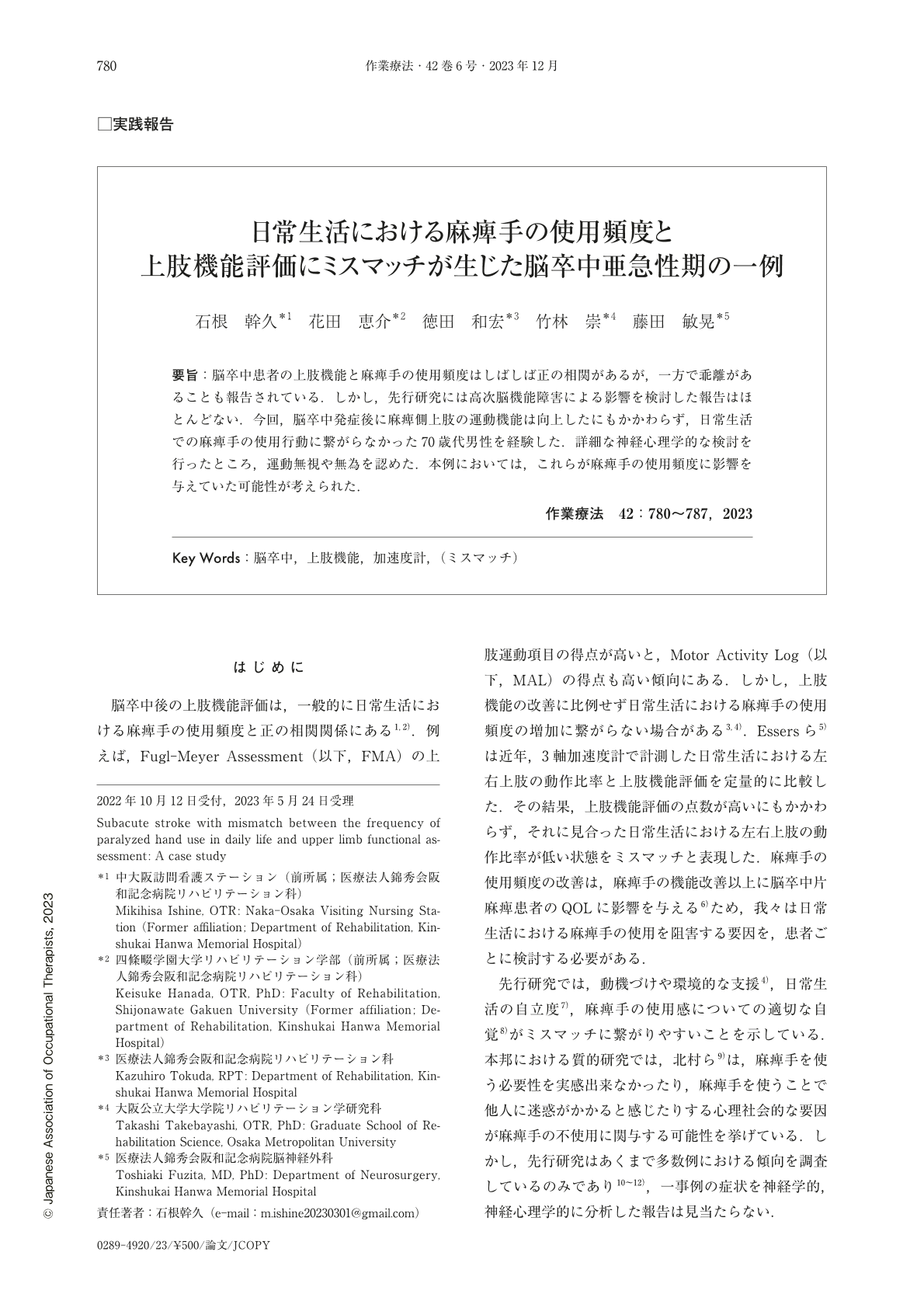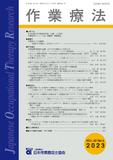Japanese
English
- 販売していません
- Abstract 文献概要
- 1ページ目 Look Inside
- 参考文献 Reference
要旨:脳卒中患者の上肢機能と麻痺手の使用頻度はしばしば正の相関があるが,一方で乖離があることも報告されている.しかし,先行研究には高次脳機能障害による影響を検討した報告はほとんどない.今回,脳卒中発症後に麻痺側上肢の運動機能は向上したにもかかわらず,日常生活での麻痺手の使用行動に繋がらなかった70歳代男性を経験した.詳細な神経心理学的な検討を行ったところ,運動無視や無為を認めた.本例においては,これらが麻痺手の使用頻度に影響を与えていた可能性が考えられた.
Upper extremity function in stroke patients often positively correlates with frequency of paralyzed hand use. However, some studies indicate the possibility of a discrepancy between higher hand function and lower paretic arm use in daily living. Few studies have examined the effects of higher functional disability, and not many have reported that cognitive dysfunction leads to lower paretic arm use, although most research has focused on psycho-behavioral issues in patients. In the present study, we experienced a patient who had improved motor function after stroke, but still lacked lower paretic arm use in daily life. Neuropsychological examination revealed motor neglect and abulia. We hypothesized that these factors may have influenced his behavior using the paretic arm.

Copyright © 2023, Japanese Association of Occupational Therapists. All rights reserved.


